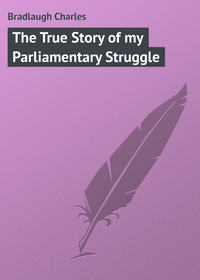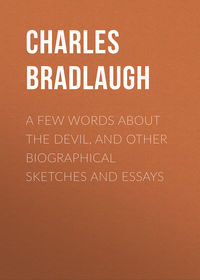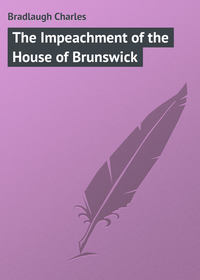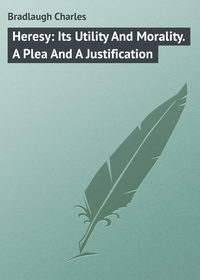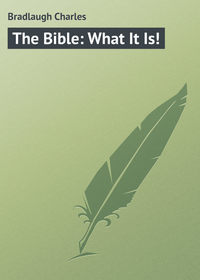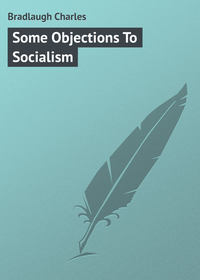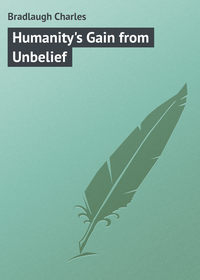 полная версия
полная версияWhen Were Our Gospels Written?
Dr. Teschendorf's style is well exemplified by the positive manner in which he fixes the date a.d. 139 to the first apology of Justin, although a critic so "learned" as the unrivalled Dr. Teschendorf could not fail to be aware that more than one writer has supported the view that the date of the first apology was not earlier than a.d. 145, and others have contended for a.d. 150. The Benedictine editors of Justin's works support the latter date. Dr. Kenn argues for a.d. 155 – 160. On page 63, the Religious Tract Society's champion appeals to the testimony of Justin Martyr, but in order not to shock the devout while convincing the profane, he omits to mention that more than half the writings once attributed to Justin Martyr are now abandoned, as either of doubtful character or actual forgeries, and that Justin's value as a witness is considerably weakened by the fact that he quotes the acts of Pilate and the Sybilline Oracles as though they were reliable evidence, when in fact they are both admitted specimens of "a Christian forgery." But what does Justin testify as to the Gospels? Does he say that Matthew, Mark, Luke, and John were their writers? On the contrary, not only do the names of Matthew, – Mark, Luke, and John never occur as Evangelists in the writings of Justin, but he actually mentions facts and sayings as to Jesus, which are not found in either of the four Gospels. The very words rendered Gospels only occur where they are strongly suspected to be interpolated, Justin usually speaking of some writings which he calls "memorials" or "memoirs of the Apostles."
Dr. Tischendorf urges that in the writings of Justin the Gospels are placed side by side with the prophets, and that "this undoubtedly places the Gospels in the list of canonical books." If this means that there is any statement in Justin capable of being so construed, then Dr. Tischendorf was untruthful. Justin does quote specifically the Sybilline oracles, but never Matthew, Mark, Luke, or John. He quotes statements as to Jesus, which may be found in the apocryphal Gospels, and which are not found in ours, so that if the evidence of Justin Martyr be taken, it certainly does not tend to prove, even in the smallest degree, that four Gospels were specially regarded with reverence in his day. The Rev. W. Sanday thinks that Justin did not assign an exclusive authority to our Gospels, and that he made use also of other documents no longer extant. ("Gospels in 2nd Century," p. 117.)
On p. 94 it is stated that "as early as the time of Justin the expression 'the Evangel' was applied to the four Gospels." This statement by Dr. Tischendorf and its publication by the Religious Tract Society call for the strongest condemnation. Nowhere in the writings of Justin are the words "the Evangel" applied to the four Gospels.
Lardner only professes to discover two instances in which the word anglicised by Tischendorf as "Evangel," occurs; [______ ______], the second being expressly pointed out by Schleiermacher as an interpolation, and as an instance in which a marginal note has been incorporated with the text; nor would one occurrence of such a word prove that any book or books were so known by Justin, as the word is merely a compound of good and message; nor is there the slightest foundation for the statement that in the time of Justin the word Evangel was ever applied to designate the four Gospels now attributed to Matthew, Mark, Luke, and John.
Dr. Tischendorf (p. 46) admits that the "faith of the Church… would be seriously compromised" if we do not find references to the Gospels in writings between a.d. 100 and a.d. 150; and – while he does not directly assert – he insinuates that in such writings the Gospels were "treated with the greatest respect," or "even already treated as canonical and sacred writings;" and he distinctly affirms that the Gospels "did see the light" during the "Apostolic age," "and before the middle of the second century our Gospels were held in the highest respect by the-Church," although for the affirmation, he neither has nor advances the shadow of evidence.
The phrases, "Apostolic age" and "Apostolic fathers" denote the first century of the Christian era, and those-fathers who are supposed to have flourished during that period, and who are supposed to have seen or heard, or had the opportunity of seeing or hearing, either Jesus or someone or more of the twelve Apostles. Barnabas, Clement, Hermas, Ignatius, and Polycarp, are those whose names figure most familiarly in Christian evidences as Apostolic fathers. But the evidence from these Apostolic fathers is of a most unreliable character. Mosheim ("Ecclesiastical History," cent. 1, cap. 2, sec. 3,17) says that "the Apostolic history is loaded with doubts, fables, and difficulties," and that not long after Christ's ascension several histories were current of his life and doctrines, full of "pious frauds and fabulous wonders." Amongst these were "The Acts of Paul," "The Revelation of Peter," "The Gospel of Peter," "The Gospel of Andrew," "The Gospel of John," "The Gospel of James," "The Gospel of the Egyptians," etc. The attempts often made to prove from the writings of Barnabas, Ignatius, etc., the prior existence of the four Gospels, though specifically unnamed, by similarity of phraseology in quotations, is a failure, even admitting for the moment the genuineness of the Apostolic Scriptures, if the proof is intended to carry the matter higher than that such and such statements were current in some form or other, at the date the fathers wrote. As good an argument might be made that some of the Gospel passages were adopted from the fathers. The fathers occasionally quote, as from the mouth of Jesus, words which are not found in any of our four Gospels, and make reference to events not included in the Gospel narratives, clearly evidencing that even if the four documents ascribed to Matthew, Mark, Luke, and John, were in existence, they were not the only sources of information from which some of the Apostolic fathers derived' their knowledge of Christianity, and evidencing also that the four Gospels had attained no such specific superiority as to entitle them to special mention by name.
Of the epistle attributed to Barnabas, which is supposed by its supporters to have been written in the latter part of the first century, which, Paley says, is probably genuine, which is classed by Eusebius as spurious ("Ecclesiastical History," book iii., cap. 25), and which Dr. Donaldson does not hesitate for one moment in refusing to ascribe to Barnabas the Apostle ("Ante-Nicene Fathers," vol. i., p. 100), it is only necessary to say that so far from speaking of the Gospels with the greatest respect, it does not mention by name any one of the four Gospels. There are some passages in Barnabas which are nearly identical in phraseology with some Gospel passages, and which it has been argued are quotations from one or other of the four Gospels, but which may equally be quotations from other Gospels, or from writings not in the character of Gospels. There are also passages which are nearly identical with several of the New Testament epistles, but even the great framer of Christian evidences, Lardner, declares his conviction that none of these last-mentioned passages are quotations, or even allusions, to the Pauline or other epistolary writings. Barnabas makes many quotations which clearly demonstrate that the four Gospels, if then in existence and if he had access to them, could not have been his only source of information as to the teachings of Jesus (E. G., cap. 7).
"The Lord enjoined that whosoever did not keep the fast should be put to death." "He required the goats to be of goodly aspect and similar, that when they see him coming they may be amazed by the likeness to the goat." Says he, "those who wish to behold me and lay hold of my kingdom, must through tribulation and suffering obtain me" (cap. 12). And the Lord saith, "When a tree shall be bent down and again rise, and when blood shall flow out of the wound." Will the Religious Tract Society point out from which of the Gospels these are quoted?
Barnabas (cap. 10) says that Moses forbade the Jews to eat weasel flesh, "because that animal conceives with the mouth," and forbad them to eat the hyena because that animal annually changes its sex. This father seems to have made a sort of melange of some of the Pentateuchal ordinances. He says (cap. 8) that the Heifer (mentioned in Numbers) was a type of Jesus, that the three (?) young men appointed to sprinkle, denote Abraham, Isaac, and Jacob, that wool was put upon a stick because the kingdom of Jesus was founded upon the cross, and (cap. 9) that the 818 men circumcised by Abraham stood for Jesus crucified. Barnabas also declared that the world was to come to an end in 6,000 years ("Freethinkers' Text Book" part ii., p. 268). In the Sinaitic Bible, the Epistle of St. Barnabas has now, happily for misguided Christians, been discovered in the original Greek. To quote the inimitable style of Dr. Tischendorf, "while so much has been lost in the course of centuries by the-tooth of time and the carelessness of ignorant monks, an invisible eye had watched over this treasure, and when it was on the point of perishing in the fire, the Lord had decreed its-deliverance;" "while critics have generally been divided between assigning it to the first or second decade of the second century, the Sinaitic Bible, which has for the first time cleared up this question, has led us to throw its composition as far back as the last decade of the first century." A fine specimen of Christian evidence writing, cool assertion without a particle of proof and without the slightest reason-given. How does the Siniatic MS., even if it be genuine, clear up the question of the date of St. Barnabas's Epistle? Dr. Tischendorf does not condescend to tell us what has led the Christian advocate to throw back the date of its composition? We are left entirely in the dark: in fact, what Dr. Tischendorf calls a "throw back," is if you look at Lardner just the reverse. What does the epistle of Barnabas prove, even if it be genuine? Barnabas quotes, by name, Moses and Daniel, but never Matthew, Mark, Luke or John. Barnabas specifically refers to Deuteronomy and the prophets, but never to either of the four Gospels.
There is an epistle attributed to Clement of Rome, which has been preserved in a single MS. only where it is coupled with another epistle rejected as spurious. Dr. Donaldson ("Ante-Nicene Fathers," vol. i., p. 3) declares that who the Clement was to whom these writings are ascribed cannot with absolute certainty be determined. Both epistles stand on equal authority; one is rejected by Christians, the other is received. In this epistle while there is a distinct reference to an Epistle by Paul to the Corinthians, there is no mention-by name of the four Gospels, nor do any of the words attributed by Clement to Jesus agree for any complete quotation with anyone of the Gospels as we have them. The Rev. W. Sanday is frank enough to concede "that Clement is not quoting directly from our Gospels."
Is it probable that Clement would have mentioned a writing by Paul, and yet have entirely ignored the four Gospels, if he had known that they had then existed? And could they have easily existed in the Christian world in his day without his knowledge? If anyone takes cap. xxv. ef this epistle and sees the phoenix given as a historic fact, and as evidence for the reality of the resurrection, he will be better able to appreciate the value of this so-called epistle of Clement.
The letters of Ignatius referred to by Dr. Teschendorf are regarded by Mosheim as laboring under many difficulties, and embarrassed with much obscurity. Even Lardner, doing his best for such evidences, says, that if we find matters in the Epistles inconsistent with the notion that Ignatius was the writer, it is better to regard such passages as interpolations, than to reject the Epistles entirely, especially in the "scarcity" of such testimonies.
There are fifteen epistles of which eight are undisputedly forgeries. Of the remaining seven there are two versions, a long and a short version, one of which must be corrupt, both of which may be. These seven epistles, however, are in no case to be accepted with certainty as those of Ignatius. Dr. Cureton contends that only three still shorter epistles are genuine ("Ante-Nicene Fathers," vol. i., pp. 137 to 143). The Rev. W. Sanday treats the three short ones as probably genuine, waiving the question as to the others ("Gospels in Second Century," p. 77, and see preface to sixth edition "Supernatural Religion"). Ignatius, however, even if he be the writer of the epistles attributed to him, never mentions either of the four Gospels. In the nineteenth chapter of the Epistles to the Ephesians, there is a statement made as to the birth and death of Jesus, not to be found in either Matthew, Mark, Luke, or John.
If the testimony of the Ignatian Epistles is reliable, then it vouches that in that early age there were actually Christians who denied the death of Jesus. A statement as to Mary in cap. nineteen of the Epistle to the Ephesians is not to be found in any portion of the Gospels. In his Epistle to the Trallians, Ignatius, attacking those who denied the real existence of Jesus, would have surely been glad to quote the evidence of eye witnesses like Matthew and John, if such evidence had existed in his day. In cap. eight of the Epistles to the Philadelphians, Ignatius says, "I have heard of some who say: Unless I find it in the archives I will not believe the Gospel. And when I said it is written, they answered that remains to be proved." This is the most distinct reference to any Christian writings, and how little does this support Dr. Tischendorf s position. From which of our four Gospels could Ignatius have taken the words, "I am not an incorporeal demon," which he puts into the mouth of Jesus in cap. iii., the epistle to the Smyrnaeans? Dr. Tischendorf does admit that the evidence of the Ignatian Epistles is not of decisive value; might he not go farther and say, that as proof of the four Gospels it is of no value at all?
On page 70, Dr. Tischendorf quotes Hippolytus without any qualification. Surely the English Religious Tract Society might have remembered that Dodwell says, that the name of Hippolytus had been so abused by impostors, that it was not easy to distinguish any of his writings. That Mill declares that, with one exception, the pieces extant under his name are all spurious. That, except fragments in the writings of opponents, the works of Hippolytus are entirely lost. Yet the Religious Tract Society permit testimony so tainted to be put forward under their authority, to prove the truth of Christian history. The very work which Dr. Tischendorf pretends to quote is not even mentioned by Eusebius, in the list he gives of the writings of Hippolytus.
On page 94, Dr. Tischendorf states that Basilides, before a.d. 138, and Valentinus, about a.d. 140, make use of three out of four Gospels, the first using John and Luke, the second, Matthew, Luke, and John. What words of either Basilides or Valentinus exist anywhere to justify this reckless assertion? Was Dr. Tischendorf again presuming on the utter ignorance of those who are likely to read his pamphlet? The Religious Tract Society are responsible for Dr. Tischendorfs allegations, which it is impossible to support with evidence.
The issue raised is not whether the followers of Basilides or the followers of Valentinus may have used these gospels, but whether there is a particle of evidence to justify Dr. Tischendorf s declaration, that Basilides and Valentinus themselves used the above-named gospels. That the four Gospels were well known during the second half of the first century is what Dr. Tischendorf undertook to prove, and statements attributed to Basilides and Valentin us, but which ought to be attributed to their followers, will go but little way as such proof (see "Supernatural Religion" vol. ii., pp. 41 to 63).
It is pleasant to find a grain of wheat in the bushel of Tischendorf chaff. On page 98, and following pages, the erudite author applies himself to get rid of the testimony of Papias, which was falsified and put forward by Paley as of great importance. Paley says the authority of Papias is complete; Tischendorf declares that Papias is in error. Paley says Papias was a hearer of John, Tischendorf says he was not. We leave the champions of the two great Christian evidence-mongers to settle the matter as best they can. If, however, we are to accept Dr. Tischendorf's declaration that the testimony of Papias is worthless, we get rid of the chief link between Justin Martyr and the apostolic age. It pleases Dr. Tischendorf to damage Papias, because that father is silent as to the gospel of John; but the Religious Tract Society must not forget that in thus clearing away the second-hand evidence of Papias, they have cut away their only pretence for saying that any of the Gospels are mentioned by name within 150 years of the date clfor the birth of Jesus. In referring to the lost work of Theophilus of Antioch, which Dr. Tischendorf tells us was a kind of harmony of the Gospels, in which the four narratives are moulded and fused into one, the learned Doctor forgets to tell us that Jerome, whom he quotes as giving some account of Theophilus, actually doubted whether the so-called commentary was really from the pen of that writer. Lardner says: "Whether those commentaries which St. Jerome quotes were really composed by Theophilus may be doubted, since they were unknown to Eusebius, and were observed by Jerome to differ in style and expression from his other works. However, if they were not his, they were the work of some anonymous ancient." But if they were the work of an anonymous ancient after Eusebius, what becomes of Dr. Tischendorf's "as early as a.d. 170?"
Eusebius, who refers to Theophilus, and who speaks of his using the Apocalypse, would have certainly gladly quoted the Bishop of Antioch's "Commentary on the Four Gospels," if it had existed in his day. Nor is it true that the references we have in Jerome to the work attributed to Theophilus, justify the description given by Dr. Teschendorf, or even the phrase of Jerome, "qui quatuor Evangelist arum in unum opus dicta compingens." Theophilus seems, so far as it is possible to judge, to have occupied himself not with a connected history of Jesus, or a continuous discourse as to his doctrines, but rather with mystical and allegorical elucidations of occasional passages, which ended, like many pious commentaries on the Old or New Testament, in leaving the point dealt with a little less clear with the Theophillian commentary than without it. Dr. Tischendorf says that Theodoret and Eusebius speak of Tatian in the same way – that is, as though he had, like his Syrian contemporary, composed a harmony of the four Gospels. This is also inaccurate. Eusebius talks of Tatianus having found a certain body and collection of Gospels, "I know not how," which collection Eusebius does not appear even to have ever seen; and so far from the phrase in Theodoret justifying Dr. Tischendorf's explanation, it would appear from Theodoret that Tatian's Diatessaron was, in fact, a sort of spurious gospel, "The Gospel of the Four" differing materially from our four Gospels of Matthew, Mark, Luke, and John. Neither Irenaeus, Clement of Alexandria, or Jerome, who refer to other works of Tatian, make any mention of this. Dr. Tischendorf might have added that Diapente, or "the Gospel of the Five," has also been a title applied to this work of Tatian.
In the third chapter of his essay, Dr. Tischendorf refers to apocryphal writings "which bear on their front the names of Apostles" "used by obscure writers to palm off" their forgeries. Dr. Tischendorf says that these spurious books were composed "partly to embellish" scripture narratives, and "partly to support false doctrine;" and he states that in early times, the Church was not so well able to distinguish true gospels from false ones, and that consequently some of the apocryphal writings "were given a place they did not deserve." This statement of the inability of the Church to judge correctly, tells as much against the whole, as against any one or more of the early Christian writings, and as it may be as fatal to the now received gospels as to those now rejected, it deserves the most careful consideration. According to Dr. Tischendorf, Justin Martyr falls into the category of those of the Church who were "not so critical in distinguishing the true from the false;" for Justin, says Tischendorf, treats the Gospel of St. James and the Acts of Pilate, each as a fit source whence to derive materials for the life of Jesus, and therefore must have regarded the Gospel of St. James and the Acts of Pilate, as genuine and authentic writings; while Dr. Tischendorf, wiser, and a greater critic than Justin, condemns the Gospel of St. James as spurious, and calls the Acts of Pilate "a pious fraud;" but if Dr. Tischendorf be correct in his statement that "Justin made use of this Gospel" and quotes the "Acts of Pontius Pilate," then, according to his own words, Justin did not know how to distinguish the true from the false, and the whole force of his evidence previously used by Dr. Tischendorf in aid of the four Gospels would have been seriously diminished, even if it had been true, which it is not, that Justin Martyr had borne any testimony on the subject.
Such, then, are the weapons, say the Religious Tract Society, by their champion, "which we employ against unbelieving criticism." And what are these weapons? We have shown in the preceding pages, the suppressio veri and the suggestio falsi are amongst the weapons used. The Religious Tract Society directors are parties to fabrication of evidence, and they permit a learned charlatan to forward the cause of Christ with craft and chicane. But even this is not enough; they need, according to their pamphlet, "a new weapon;" they want "to find out the very words the Apostles used." True believers have been in a state of delusion; they were credulous enough to fancy that the authorised version of the Scriptures tolerably faithfully represented God's revelation to humankind. But no, says Dr. Tischendorf, it has been so seriously modified in the copying and re-copying that it ought to be set aside altogether, and a fresh text constructed. Glorious news this for the Bible Society. Listen to it, Exeter Hall! Glad tidings to be issued by the Paternoster Row saints! After spending hundreds of thousands of pounds in giving away Bibles to soldiers, in placing them in hotels and lodging-houses, and shipping them off to negroes and savages, it appears that the wrong text has been sent through the world, the true version being all the time in a waste-paper heap at Mount Sinai, watched over by an "invisible eye." But, adds Dr. Tischendorf, "if you ask me whether any popular version contains the original text, my answer is Yes and No. I say Yes as far as concerns your soul's salvation." If these are enough for the soul's salvation, why try to improve the matter? If we really need the "full and clear light" of the Sinaitic Bible to show us "what is the Word written by God," then most certainly our present Bible is not believed by the Religious Tract Society to be the Word written by God. The Christian advocates are in this dilemma: either the received, text is insufficient, or the proposed improvement is unnecessary. Dr. Tischendorf says that "The Gospels, like the only begotten of the Father, will endure as long as human nature itself," yet he says "there is a great diversity among the texts," and that the Gospel in use amongst the Ebionites and that used amongst the Nazarenes have been "disfigured here and there with certain arbitrary changes." He admits, moreover, that "in early times, when the Church was not so critical in distinguishing the true from the false," spurious Gospels obtained a credit which they did not deserve. And while arguing for the enduring character of the Gospel, he requests you to set aside the received text altogether, and to try to construct a new revelation by the aid of Dr. Tischendorf's patent Sinaitic invention.
We congratulate the Religious Tract Society upon their manifesto, and on the victory it secures them over German Rationalism and English Infidelity. The Society's translator, in his introductory remarks, declares that "circumstantial evidence when complete, and when every link in the chain has been thoroughly tested, is as strong as direct testimony;" and, adds the Society's penman, "This is the kind of evidence which Dr. Tischendorf brings for the genuineness of our Gospels." It would be difficult to imagine a more inaccurate description of Dr. Tischendorf's work. Do we find the circumstantial evidence carefully tested in the Doctor's boasting and curious narrative of his journeys commenced on a pecuniary deficiency and culminating in much cash? Do we find it in Dr. Tischendorf s concealment for fifteen years of the place, watched over by an invisible eye, in which was hidden the greatest biblical treasure in the world? Is the circumstantial evidence shown in the sneers at Renan? or is each link in the chain tested by the strange jumbling together of names and conjectures in the first chapter? What tests are used in the cases of Valentinus and Basilides in the second chapter? How is the circumstantial testimony aided by the references in the third chapter to the Apocryphal Gospels? Is there a pretence even of critical testing in the chapter devoted to the apostolic fathers? All that Dr. Tischendorf has done is in effect to declare that our authorised version of the New Testament is so unreliable, that it ought to be got rid of altogether, and a new text constructed. And this declaration is circulated by the Religious Tract Society, which sends the sixpenny edition of the Gospel with one hand, and in the other the shilling Tischendorf pamphlet, declaring that many passages of the Religious Tract Society's New Testament have undergone such serious modifications of meaning as to leave us in painful uncertainty as to what was originally written.


